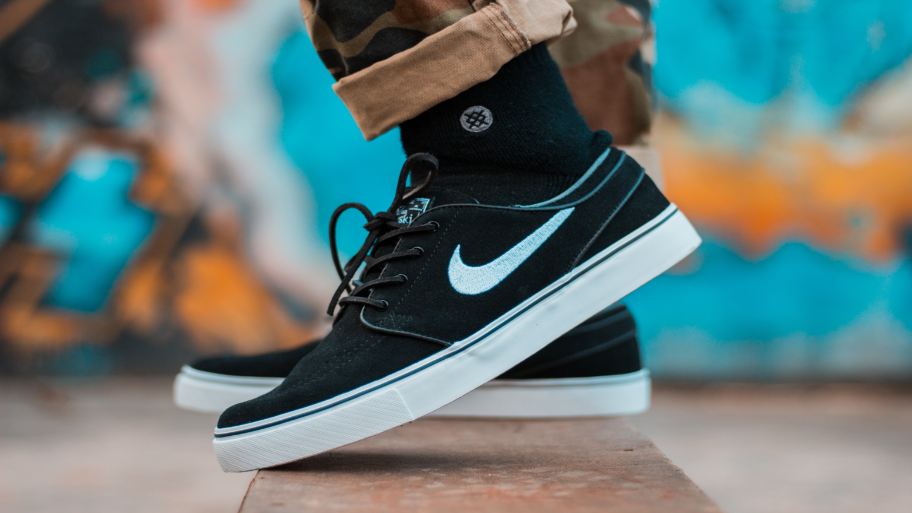During the global pandemic, back when many individuals had to work from home for several months, sales of brands like Nike (NYSE:NKE) and Lululemon (NYSE:LULU) went through the roof.
From the start of 2020 to the end of 2020, Nike stock went up by 65%, and Lululemon stock went up by 69%.
But 2022 has been a very different year. Shares of Nike and Lululemon have dropped by 32% and 15%, respectively.
In this article, we’ll take a closer look at Nike, a company that did well during the pandemic boom but is now facing several problems as 2023 approaches.
Nike Is Facing Strong Headwinds
Nike has done a good job of switching to more direct-to-consumer sales, which can significantly affect the company’s gross margins.
Nike has also done an excellent job of building a global brand that connects all consumers worldwide.
On the other hand, the headwinds will make it more challenging for Nike to do better in 2023.
- Inventory increase
- Earnings revisions
- China risk exposure
Let’s start with the overabundance of inventory, a common problem for retailers in 2022. After a year of issues with the supply chain, the situation has changed: all the extra stock ordered has arrived, but demand has slowed.
Nike announced its fiscal Q1 results at the end of September. On a currency-neutral basis, sales went up 10%, but gross margins went down 220 basis points, which caused EPS to drop by 20%.
Inventory grew by a massive 44% from one year to the next. This is where the problems are. The number of items in North America went up by 65%, while the number in transit went up by 85%. All of these things are bad for an investor to think about.
This is what CFO Matthew Friend said about the increase in stock: “This reflects a combination of late delivery for the previous two seasons, early holiday orders that are now expected to arrive earlier than planned, and a prior year impacted by factory closures in Vietnam and Indonesia. As a result, we are taking decisive action to clear excess inventory, focusing on specific pockets of seasonally late products, primarily in the apparel industry.”
Now, the company has to get rid of this extra stock by selling it on sale or for a very low price to discount stores like T.J. Maxx (NYSE:TJX) or Ross Stores (NASDAQ:ROST).
These problems with inventory are likely to hurt margins for most of 2023.
China is also a problem for the company because it does business there. China still has to deal with its strict zero COVID policy, which is expected to get easier soon, but it has affected Nike.
In the first quarter, sales in Greater China were down 13% from last year’s, and EBIT was down 23%.
North America is the company’s biggest single market, making up about 40% of revenue. Conversely, China is the company’s second biggest market, making up just under 20% of revenue.
The company has a strict policy about pandemics, and relations between the U.S. and China have worsened in 2022. This could hurt Nike and other companies that do business in China.
Given these two things and the fact that expectations will be lower in 2023, expectations will need to be lowered in 2023. This is what most investors think, not just about Nike but about many S&P 500 stocks.
So far this year, Nike shares are down 35%, trading at 31.5x, the same as their 5-year average.
But the past year and the year to come don’t seem average. Inventory is up 44% from last year, but sales are about the same and operating margins have gone down from 15.8% to 13.2%. Also, in the last year, free cash flow has dropped by more than 40%.
Analysts think EPS will be $2.95 in FY23 and $3.79 in FY24. This means that in FY23 and FY24, the forward earnings multiple is 38x and in FY24, it is 30x.
The company is already halfway through its fiscal year, so the next earnings report will show how well it did during the important holiday season. However, a nearly 30% increase in FY24, which ends in May 2024, seems like a lot.
What Investors Need to Know
Nike Stock is a well-known brand and company with ties all over the world. But, like many other retailers, they have big problems with their inventory that will affect their finances over the next six months and beyond.
Trading above 30x on a forward basis still seems high to me, so it isn’t a good time to buy Nike shares at the moment.
The company does pay a dividend that yields 1.2% and has been increasing it for 10 years and counting, with a 5-year dividend growth rate of 11%.
But even though I like dividend growth stocks, I want to avoid owning Nike stock right now because of how the economy is doing.
Featured Image – Pexels © Ray Piedra

















